How to fix a faulty AC adapter
In may home nothing is thrown away and will be repaired if possible. Sometimes this is not worthwhile. However often a repair is easy.
Safety: In a power supply, there is the full mains voltage. Therefore, the repair only trained professionals is reserved. Short circuits can cause a fire. Incorrect repairs can also destroy the operated with this power supply devices. Anyone who is not should not make any repairs.
The Case: A power supply (5 volts / 2 amps DC), which is designed as a switching power supply, acknowledged his service during operation and returns no more output voltage. A few hours ago it produced interference on medium wave. The power supply from the year 2004 has been in continuous operation for several years, and fed an old PDA .
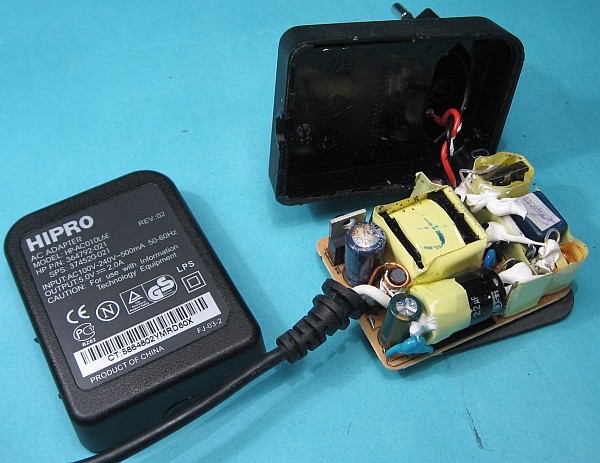
Open power supply, which consists of a switching power supply.
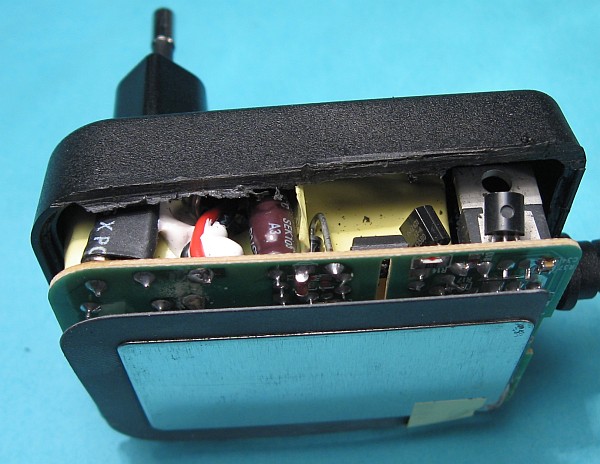
Closely it comes to the chassis. Below is an insulated metal plate to see what can be bent. It prevents unacceptably high interference.
Opening of the housing: the housing is made of two welded plastic shells. Attempts to put the screwdriver in the groove failed. Therefore, the power supply was clamped in the vise and sawed on one side along the groove with a hacksaw, so that a gap was created. In such a screwdriver could be inserted to gently pry the housing.
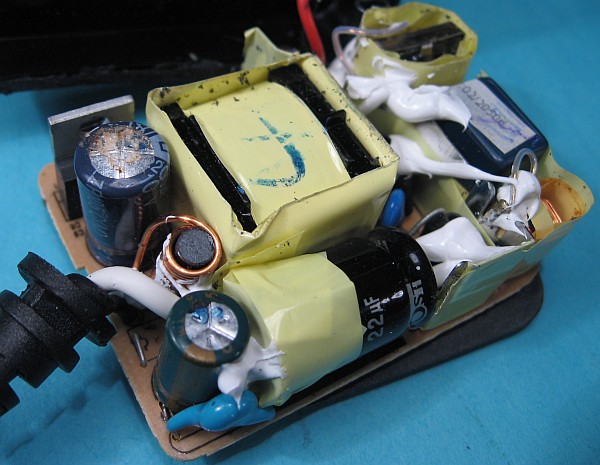
The error is obvious. The Elko top left is arched and was replaced.
The failure and repair: After opening the error was immediately visible. In the secondary circuit is an electrolytic capacitor is 2200 uF / 10 volt, which was bloated. A measurement revealed that he had only 150 uF. I had replaced it with an electrolytic capacitor 1000uF / 16V. This is not optimal, but this fit its dimensions into the case. After the switching power supply worked perfectly again. Disorders of broadcasting could not be found. More about the bloated capacitors is under http://de.wikipedia.org/wiki/Kondensatorpest . In at least 80% of the cases bloated capacitors are the cause of a defect.
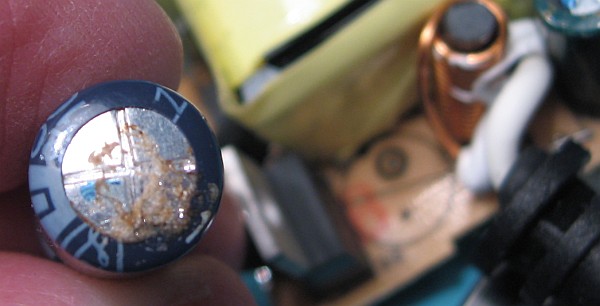
The domed lid of the defective capacitors. Also, something was leaking electrolyte.
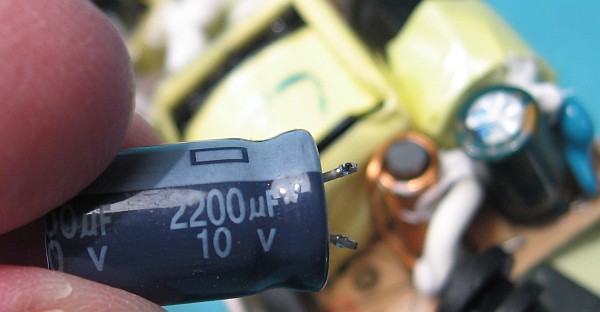
The offender had only 150 uF.
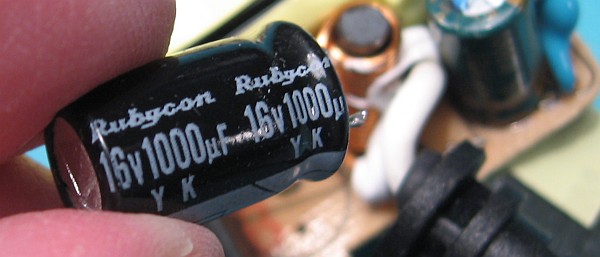
As a replacement, I had nothing better found in the junk box. If the power supply at about 150 uF capacitance was still working, 1000uF will be enough. The withstand voltage is 16 volts more than adequate. Installation, check for the correct polarity. To my knowledge, had the Japanese Elko manufacturer Rubycon never used faulty electrolyte.
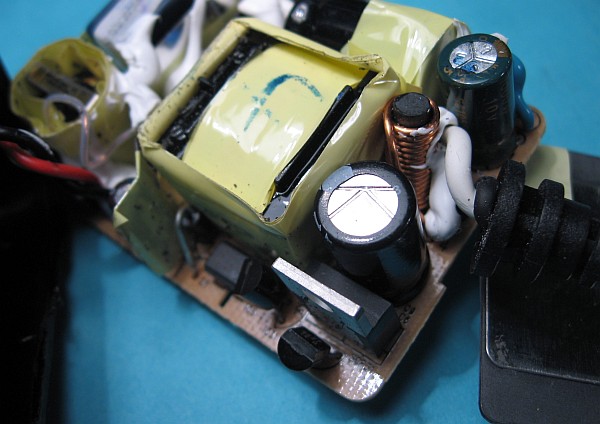
The new Elko is installed and adjusts its dimensions.
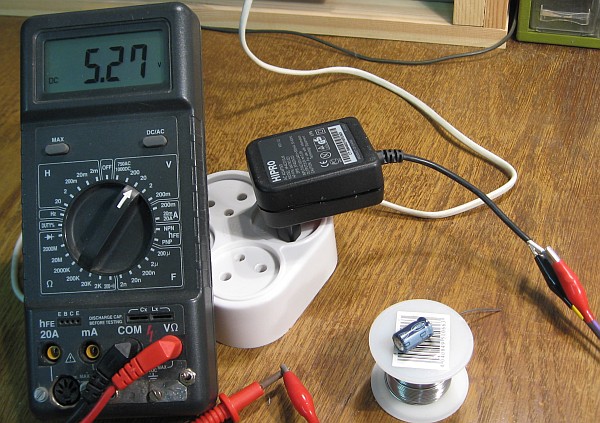
5.27 volts output are still within tolerance.
Assembly: The cable I had cut to temporarily recharge the batteries with a different power supply can. The cable was repaired with heat shrink tubing. The casing was cemented. Two hours of work pay off in a nine year old power supply that gives it for about 10 euros, only when you're having fun at the repair.
